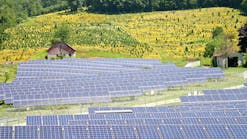bp-Iberdrola Joint Venture Contracts 25 MW Plug Power Electrolyzers to Produce Green Hydrogen at Spanish Refinery
Oil and gas global giant bp is aiming to decarbonize part of its Spanish refinery operations by bringing in Plug Power's proton exchange membrane electrolyzers to generated green hydrogen.
Plug Power secured the 25 MW order from bp and Iberdrola’s joint venture Castellón Green Hydrogen S.L refinery to be installed at bp’s Castellón refinery in Valencia. Refinery owners and operators hope to reduce carbon emissions by 23,000 metric tons per year by converting to green hydrogen and reducing the amount of gray H2 currently produced at the site.
The refinery currently uses natural gas to generate hydrogen, which itself has no carbon in its molecular chain. To create green hydrogen, the H2 is produced when an electrolyzer splits the hydrogen from water, and the electrolyzer is powered by a carbon-free resource such as solar, battery storage, hydro or nuclear.
Gray hydrogen is H2 created through steam reforming or gasification of methane, which is more carbon intensive.
Plug Power’s PEM electrolyzers will replace part of the gray hydrogen currently produced, according to the announcement. The project and electrolyzer installment is expected to be completed by late 2026.
"The selection of Plug's technology for this project serves as a clear example of our established industry expertise and proven technology,” Plug CEO Andy Marsh said in a statement. "Industry experts have highlighted the immense market potential for green hydrogen in Europe as being a key factor for reaching European Union decarbonization targets. This presents a significant opportunity for Plug, and we have the market knowledge and technology readily available to make a substantial impact.”
The electrolyzers are manufactured at Plug Power’s gigafactory in Rochester, New York. The deal with bp and Iberdrola's joint venture could expand to 2 GW of electrolysis capacity eventually, according to Plug.
Last year, bp announced plans to create a low-carbon green hydrogen cluster in the Valencia region. The company could invest up to 2 billion Euros ($2.2B US) on the decarbonization plan around increasing hydrogen, renewables and biofuels production by 2030.
In confirming that investment and joint venture with Iberdrola earlier this month, Felipe Arbelaez, bp’s senior vice president of hydrogen and carbon capture and storage, defined the move as pivotal for the company’s H2 goals.
“This is bp’s first investment decision for an industrial-scale project and represents a significant advancement for our hydrogen operations,” Arbelaez said at the time. “This project exemplifies how partnerships can drive forward a nascent energy source crucial for decarbonizing industry. The Castellón refinery will play a leading role in this transformation.”
The 25 MW electrolyzers will be powered by solar photovoltaic and wind energy through a power purchase agreement with renewable project developer Iberdrola.





